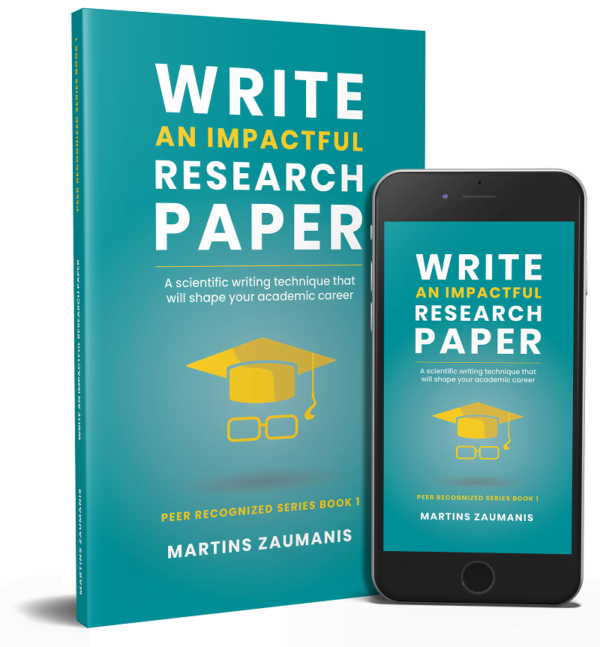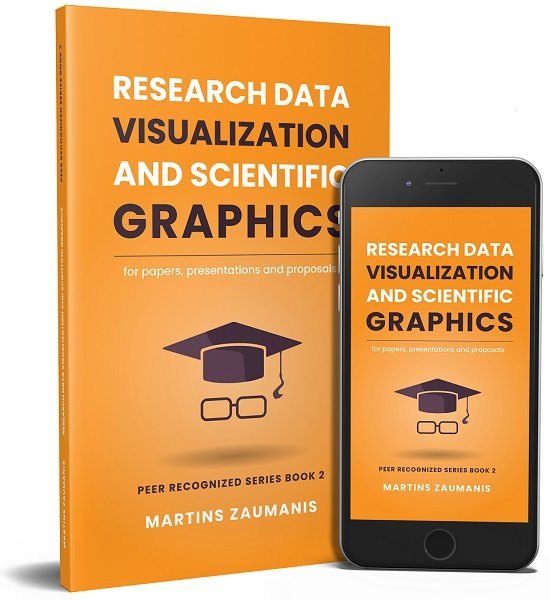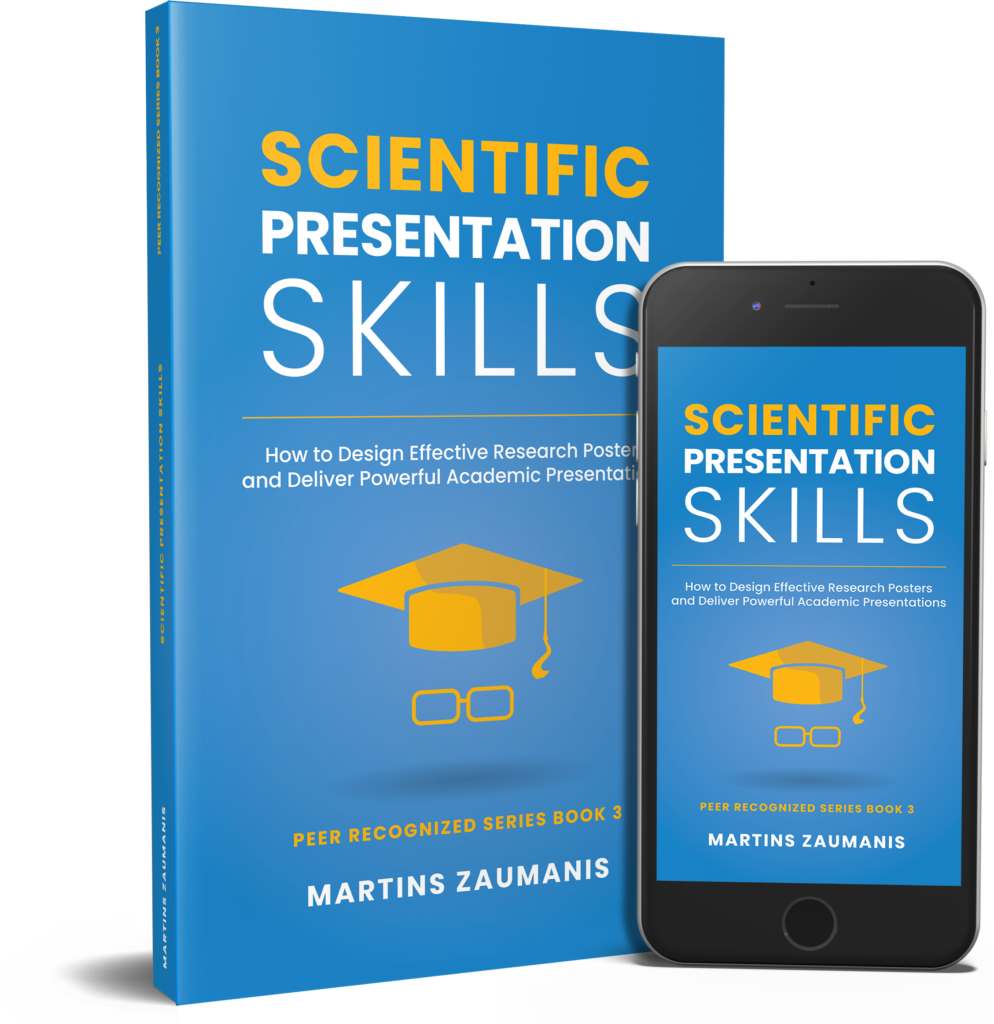Book 1: Write an Impactful Research Paper
“A blueprint for confident academic writing that will accelerate your academic career.”
Book 2: Research Data Visualization and Scientific Graphics
“The little edge you need to get your papers accepted, your presentations remembered, and your research proposals approved.”
Book 3: Scientific Presentation Skills
“The skills you need to make your name known in academia.”
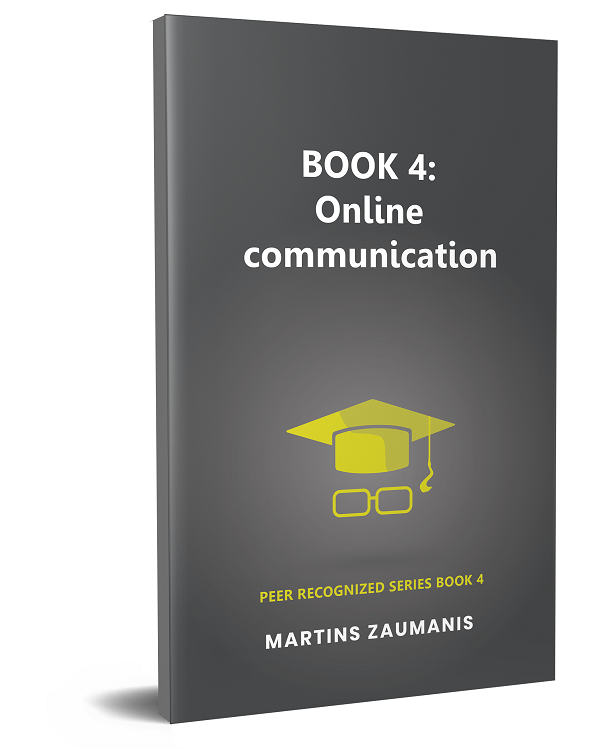
Book 4: On online communication
“Turn your name into a brand on the biggest stage of them all.”
Let me send you a notification once it’s out:
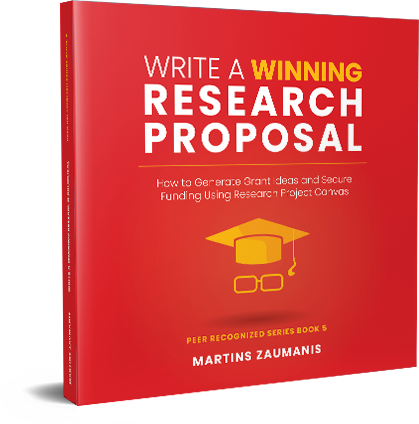
Book 5: Write a Winning Research Proposal
“Generate research ideas and obtain funding to bring them to life.”
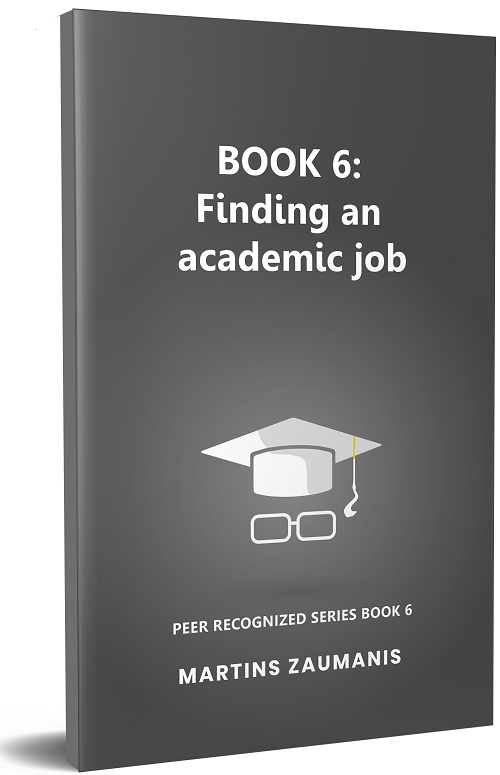
Book 6: On finding your dream job in academia
“Get your CV ready for the academic job market.”
Sign up to get a notification once the book is out:
A book for every career stage
The book sequence is not random. The Peer Recognized books are arranged in a sequence that reflects the needs at the different stages in one’s academic career. Depending on where in the career you are currently at, choose which one to pick up next.

By reading the book Peer Recognized book series you will get a full toolkit for academic communication. You will learn how to write impactful research papers, deliver engaging presentations, write proposals that get funded, and use the internet to turn your name into a brand. In other words, Peer Recognized will show you how to “sell” your research to other scientists, reviewers, supervisors, grant agencies, journalists, job interviewers, and even to your grandmother.
Unlike the field-specific technical knowledge, research communication skills get very little attention during Ph.D. studies and even less so once you are doing a postdoc. The book “Peer Recognized” will fill this gap. All you need is the commitment to put in the effort, and you will build yourself a name in academia!
The Peer Recognized story (reverse chronological)
09.05.2023 – Peer Recognized books on the shelves of the World’s oldest university
Established in 1088, Bologna University is the World’s oldest University. Nicolaus Coparnicus studied here!
Now, with the nudge of my friends Cesare and Tommaso, my books on writing research papers have found a place on the shelves of Bologna Uni library. I could not be more excited 🙂
P.S. The second picture shows the beauty of the University’s historic library, my books are not actually in this room 🙂
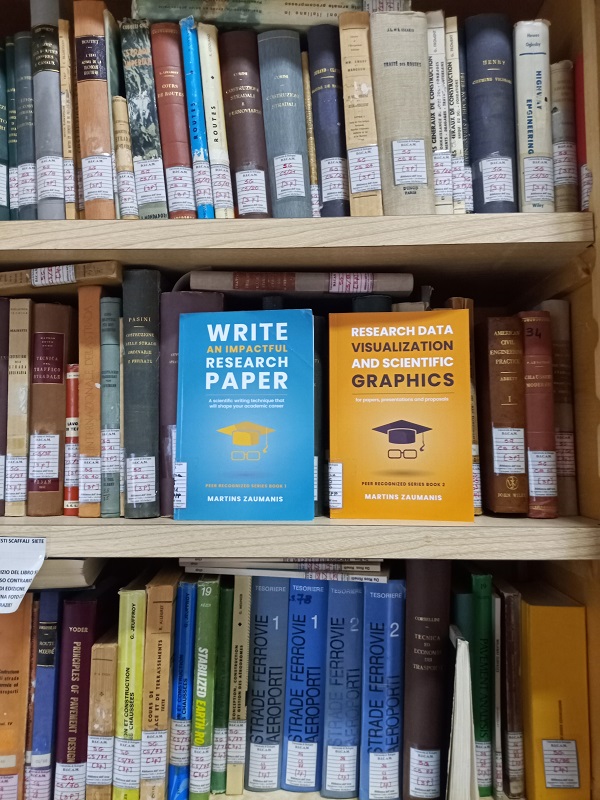

06.25.2023 – The Scientific Presentations Masterclass goes live
To film the “Scientific Presentations Masterclass” course, I converted one of the rooms in my apartment into a studio. Among other things, this meant that some videos I had to re-film because my younger daughter yelled “Paaaaaaapiiii” from another room.
The idea…
My goal was to have quality videos that are clean from any distractions and allow me to have some fun with adding my own illustrations.
In other words, I wanted to figure out how to “make the background change like in weather forecast videos“. Yes, that was about as much as I knew about the topic.
The grind…
When it did not work out with two lamps, I bought two more. When it still did not work out, I spent countless hours learning about green screens, lumens, frame rates, ISO numbers, chromakeys, and other words that meant nothing to me. Because it was too late to back down.
Like often with my projects, I perhaps over-engineered the process.
…and the result
But I managed to figure everything out and I am very happy with the result. I am now even able to fist-bump with my buddy – the Dr. Stick Man. See below.
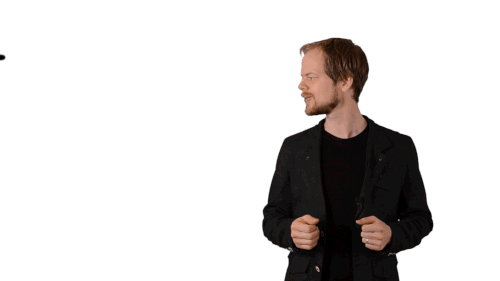
It wasn’t just for fun. The result means you won’t have to just look at another PPT deck-type presentation.
Instead, I use the clean videos to add my own drawings, motion graphics, images, and illustrative clips to make the course fun and memorable. I am sure this will help you to quickly learn how to give powerful scientific presentations.
Check out the result:
02.10.2022 – Reviews finished for the proposal writing book
For the last two years, I have worked on a new Peer Recognized series book: this one is on writing research grant proposals. One of the tips I give in the book is to look for a good reviewer that can help you improve the proposal. Good reviewers can bring a fresh perspective – they will spot flaws in logic, offer new ideas, and point toward things that you have overlooked. It is not easy to find such reviewers, but they are worth gold.
Putting my advice to practice, I have been extremely fortunate to find excellent reviewers for my new book:
- Wino Winjen is an innovation manager at WiWright and a career consultant at Skills Weaving
- Cedric Vuye is an associate professor at the University of Antwerpen.
- Ioannis Kousis is a postdoc at the University of Perugia.
I sent them a version that I thought was nearly complete but their ideas, comments, and contributions made me realize that there was still a lot of work to be done. Now, full 4 months later, the book is much more thorough and I am sending it to the last reviewer. This is the reviewer who will, like always, put the icing on the book: Les Henderson.
Of course, other people have helped me in the journey as well. They will all be included in the book.
05.23.2022 – Visiting the example from the book in London
One of the examples in my book “Research Data Visualization and Scientific Graphics” is a chart made by the physician John Snow. I got to visit the very water pump in London that is represented in his famous chart.
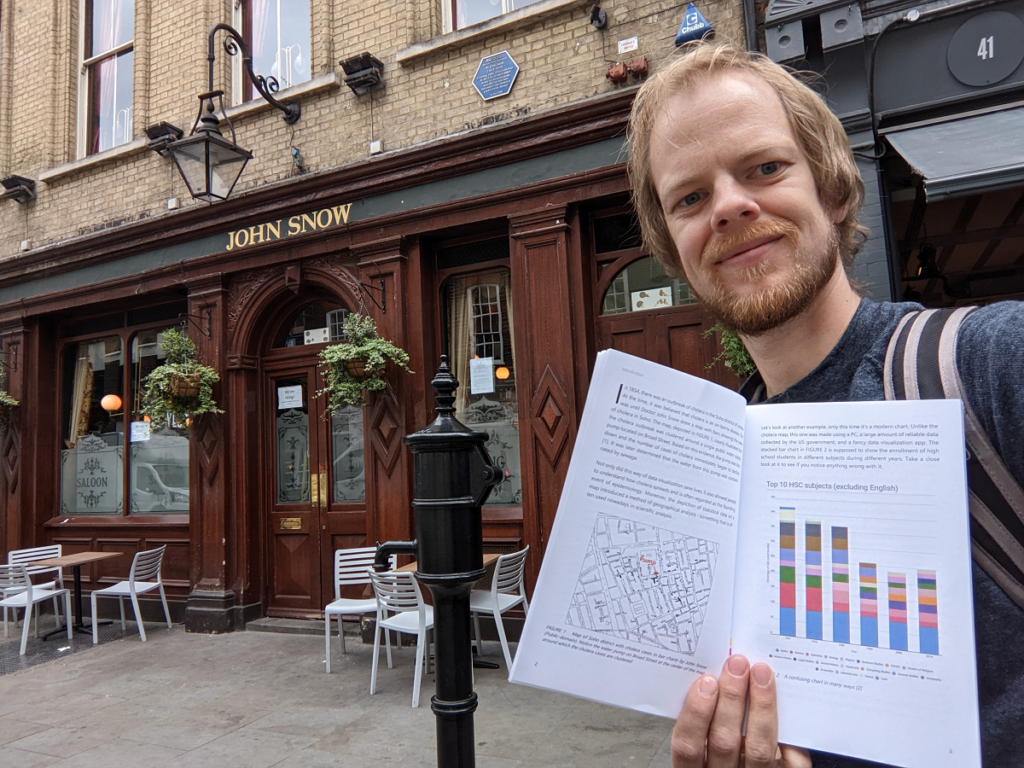
What’s so special about the chart?
With this chart, John Snow demonstrated that cholera is spreading around a single water pump. The pump was shut down and the outbreak of cholera stopped. The chart demonstrated for the first time that cholera is not an airborne but rather a water-borne disease and thus saved a lot of lives.
This chart is considered the founding event of the scientific discipline of epidemiology. It was also a major stepping stone for geographical analysis – something that we nowadays often do in science and statistics.
This is how much a single well-developed chart can accomplish.
My book “Research Data Visualization and Scientific Graphics” offers eight progressions for turning data into effective charts every time.
07.19.2022 – The Peer Recognized Easter project
What’s in common between Rocky Balboa and a scientist?
Watch my Easter break family project 🙂
🔊 ON
04.07.2022 – The 1,000th Peer Recognized series book finds its reader
Only a couple of months ago I was doubting if anyone would read my books at all. Today the 1,000th copy of my books found its reader.
Pinch me 🙂
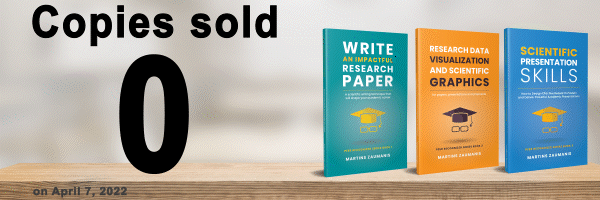
03.21.2022 – The book “Scientific Presentation Skills” is published
My new book “Scientific Presentation Skills” is out! The emphasis is on the word SKILLS because I believe any scientist can learn to give powerful presentations.
But it’s a mistake to think there is one “Presenting Skill”. Actually, it’s a set of skills that have to be mastered one thing at a time. In the book, I break down presenting and conference poster design skills into five levels and I offer a learning method to acquire each of them, called the Five-S pyramid. Through examples from conferences and scientific meetings, I show how each pyramid level can be used to give memorable presentations.
I could not be more excited about this book launch because scientific presentations are the topic is that sparked the whole idea about the Peer Recognized book series. Now, almost 4 years, a lot of sleepless nights, and two other books later, my book is finally finished.
Get the book on Amazon:
Amazon USA
Amazon UK
Amazon Germany
Amazon France
Amazon Spain
Amazon Netherlands
Amazon India
Amazon Australia
Amazon Italy
Amazon Brasil
03.15.2022 – Presentation at the Bern University of Applied Sciences
Last week I visited the students at the Bern University of Applied Sciences to talk about my eight-step approach to preparing scientific data visualizations from the book “Research Data Visualization and Scientific Graphics”.
Since I don’t teach, I value every opportunity to talk to students. This allows me to better understand the problems they face and the point of view they have. We had a fruitful discussion regarding many DataViz topics, including how data charts help to write research papers, whether to use the same charts in presentations and in research papers, and why a lot of text on a presentation slide is a bad idea.
Also – what is the penalty for removing your institution’s logo from every slide of the presentation 🙂
Thanks everyone for the discussion and thanks Nicolas Bueche and Tobias Keller for inviting me!
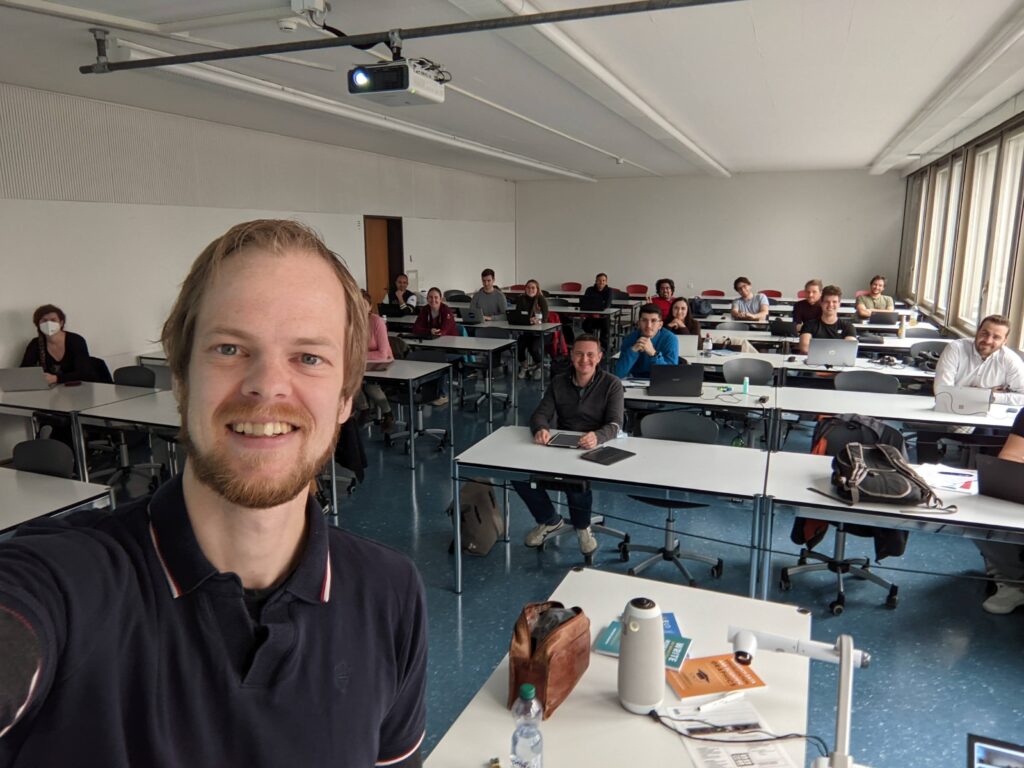
01.19.2022 – Paper Writing Forecast is released
Drowning in data, fighting the storm of review comments, and other disasters await in the paper writing forecast.
See yourself and be warned 🙂
01.06.2022 – I’m one of twelve scienstis featured this year by the Latvian Ministry of Science
It’s an honor to be one of twelve scientists that the Latvian Ministry of Science features this year. Here is a video they made about my work on asphalt recycling and the Peer Recognized book series.
The video has subtitles in English.
Besides the video, there is a calendar (I’m the December), and an exposition at the Latvian National Library. I added some pictures in this post.
11.17.2021 – Presenting for the ETH domain research institutes
More than 140 people showed up both on- and off-line for my presentation of the LEAP research paper writing approach from the book “Write an Impactful Research Paper“. The event was organized by the library (Lib4Ri) of the four ETH domain institutes Empa, Eawag, PSI, and WSL and anyone from these institutes could join the presentation. It is fair to say that it was not only my largest but also by far the most expert audience on this topic so far. Even the director of Eawag, Janet Hering, came. No pressure 🙂
After the presentation, we had a fruitful discussion with some excellent questions raised, for example:
- How to measure the impact of a scientific publication?
- How to simplify academic writing?
- Whether to select a journal before or after writing the paper?
My answers? They are in the book “Write an Impactful Research Paper“.
10.20.2021 – I’m in a podcast
I participated in a podcast to talk about my new book on creating scientific illustrations. The host, Julius Wesche, did not allow me to chit-chat too much. We got right down to business and marched through the 8 data visualization progressions listed in my book, one at a time. Listen right here:
10.15.2021 – Getting ready for a moment of fame
The Peer Recognized book series has attracted a lot of attention in my home country – Latvia. I even got invited to be one of the 12 scientists the Latvian National Science Foundation will feature during 2022. This means for a day I got to experience how it feels to be a model 🙂
During the photoshoot, the photographer kept reminding me to “look like yourself”. Considering that it took him about 500 shots to get one that he considered acceptable, I assume most of the time I do not look like myself at all 🙂
10.05.2021 – A great email
This email made my day! I hope the investment will result in more high-impact papers for the department of Prof. Vuye and less stress for the authors! Here is the book in question: https://amzn.to/3ll3woq
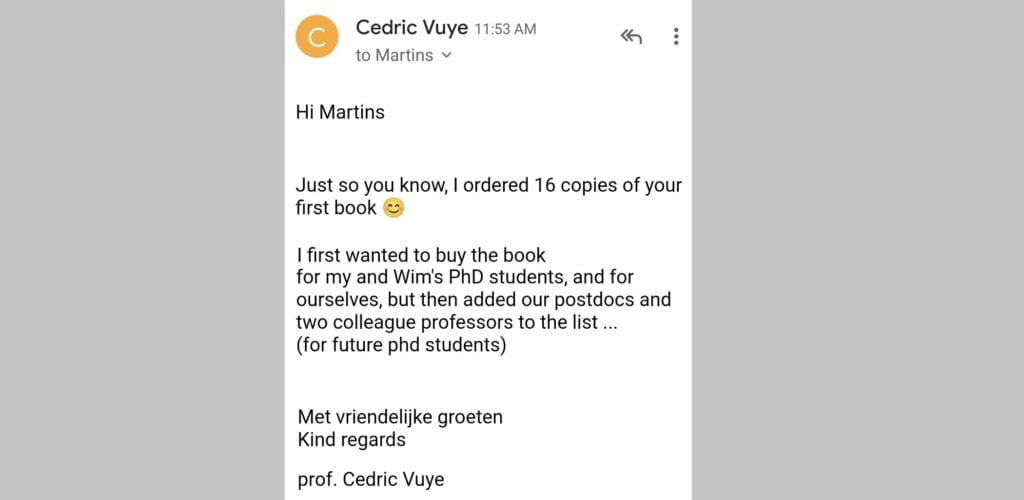
05.25.2021 – Giving tips on academic writing to students at the University of Oxford.
Yes, Oxford!
If someone would have told me this will happen just a few years ago, I would have laughed out loud. But now it’s done. Pinch me 🙂
Thank you Ria Ivandic for inviting and Tyra Tucker for organizing it. Thanks also to all the students for their positive feedback!
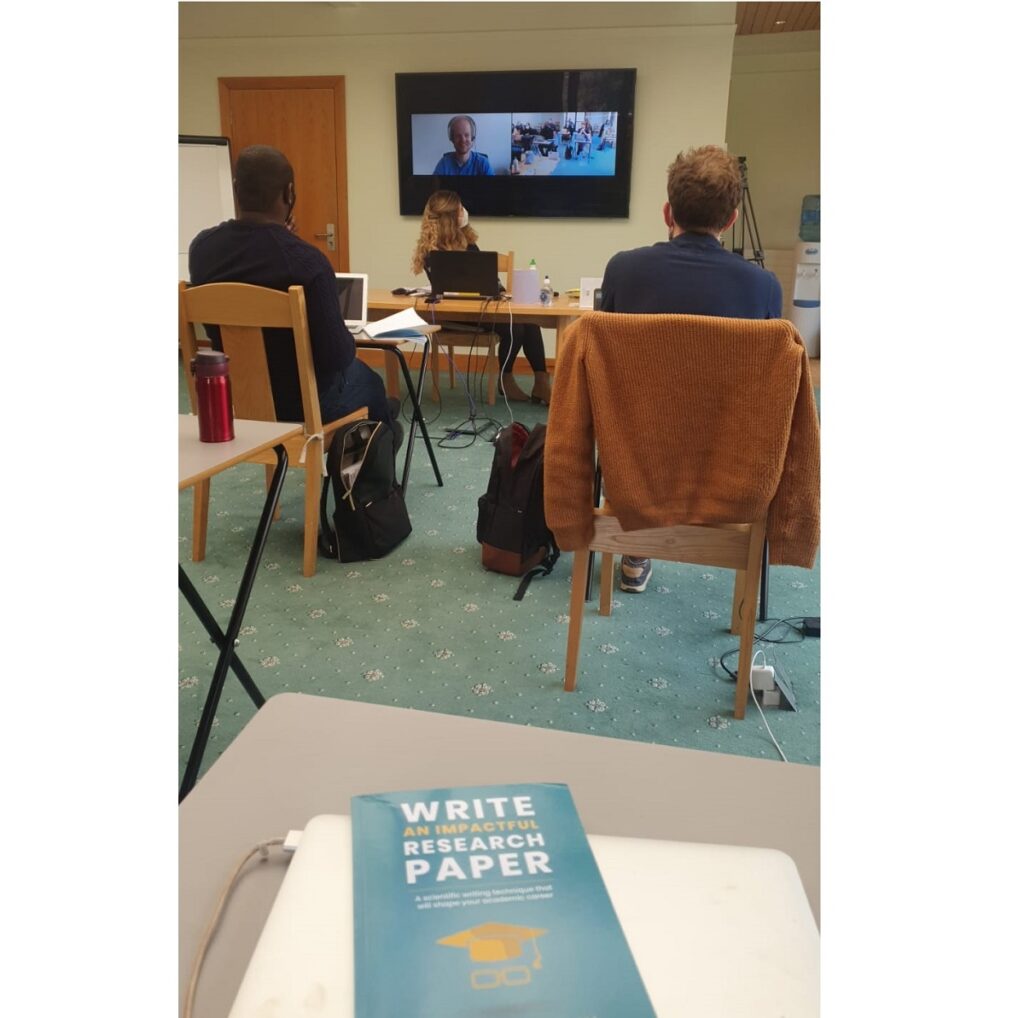
08.09.2021 – The second book is published
My new book has escaped! I mean… it’s published 🙂
The book shows how to efficiently present research data and visually communicate scientific concepts. This might be the little edge that gets your papers accepted, your presentations remembered, and your research proposals approved.
>>The first part of the book offers an eight-step approach to creating effective data visualizations. Do you feel you know this already? I thought so too before starting the research for this book… Trust me, your research results will be used much more if you learn a little bit about the way humans perceive quantitative information visually.
>>The second part of the book shows how to graphically present scientific concepts, methodology, and your ideas. Considering the amount of information that pours over us every minute graphics are often much more effective than writing. Your readers will thank you for making their life easier (and possibly award you with more citations).
The book is full of both good and bad examples from research papers, presentations, and proposals.
Order on Amazon either as a paperback or an ebook:
-USA: https://amzn.to/3CjGqq2
-Germany: https://amzn.to/3jpWQUO
-UK: https://amzn.to/3joqFp2
-France: https://amzn.to/3jjK0aY
-Italy: https://amzn.to/3xpw3gC
-Spain: https://amzn.to/3luVV8l
-Netherlands: https://amzn.to/3fqMLWL
-India: https://lnkd.in/dM4YXnz7
-Australia: https://lnkd.in/dx9f5wN6
-…and any other Amazon country
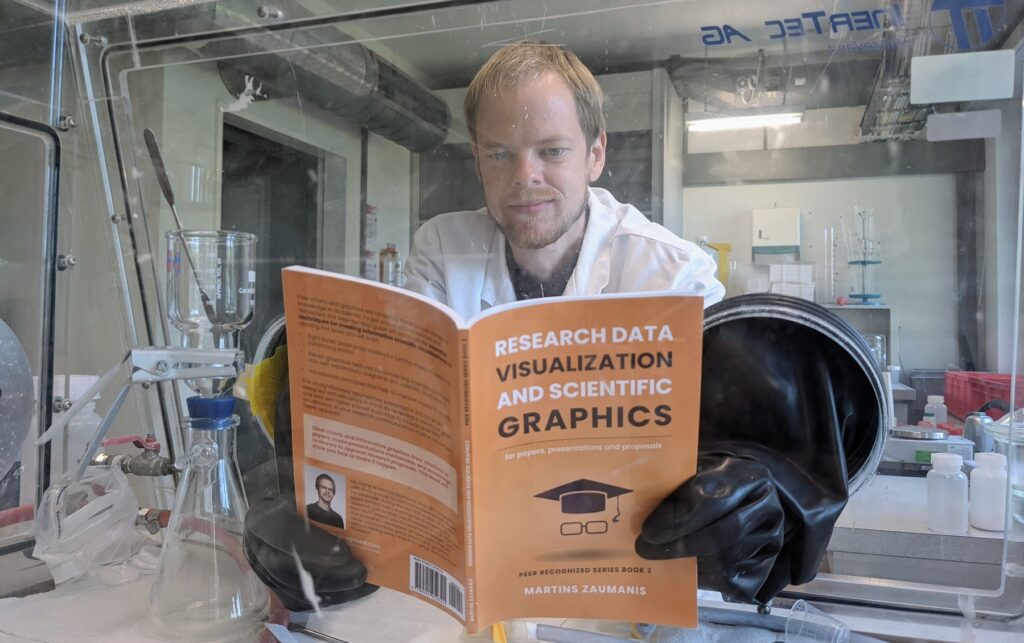
19.04.2021 – The first book is published
Drumroll, please!
The book “Write an Impactful Research Paper” is published!
Initially, I planned to finish the book in one year and I meant it. I was waking up at 5 am every day, including Saturdays and Sundays. I also took holidays just to write. Despite all of this, it took me 2.5 years to finish.
I can not say it was easy, and you can see it was not fast, but it was a lot of fun and totally worth it. I am confident that this book is the absolute best I could come up with and I hope it will make the writing process easier for many scientists.
Once you read it, please let me know what you think either through Amazon review or send an email directly to me: [email protected]
11.03.2021 – A sudden panic attack
All the reviewers are satisfied. The language editor has finished her job. The cover is ready. The book “Write an Impactful Research Paper” is done. Oh, but it’s so not…
One of the pieces of advice I give in the book is to give yourself some time between writing the research paper and submitting it. That way, it fades from the memory and you can read what is actually written instead of reading what you meant to say.
So now I read what is actually written and for some parts of the book, it was not the absolute best I could be able to come up with. This might be just a pre-launch panic attack, but I must re-write these parts before publishing.
The cover, which I had already settled for, also looks below-par. The letters are too small for reading on a mobile device and the color too unpretensive.
In summary – I need to rewrite the text and redesign the cover. Not ideal for a book that I considered finished.
31.03.2021 – https://peerrecognized.com reaches the Nirvana of websites
If you want to hide a dead body, place it on the third page of search results.
Well, the Peer Recognized website is no more the place for dead bodies! The almighty Google bots have started placing the website in the first google search page.
Fittingly, the first webpage that landed on the first google search page is a piece of advice for building websites.
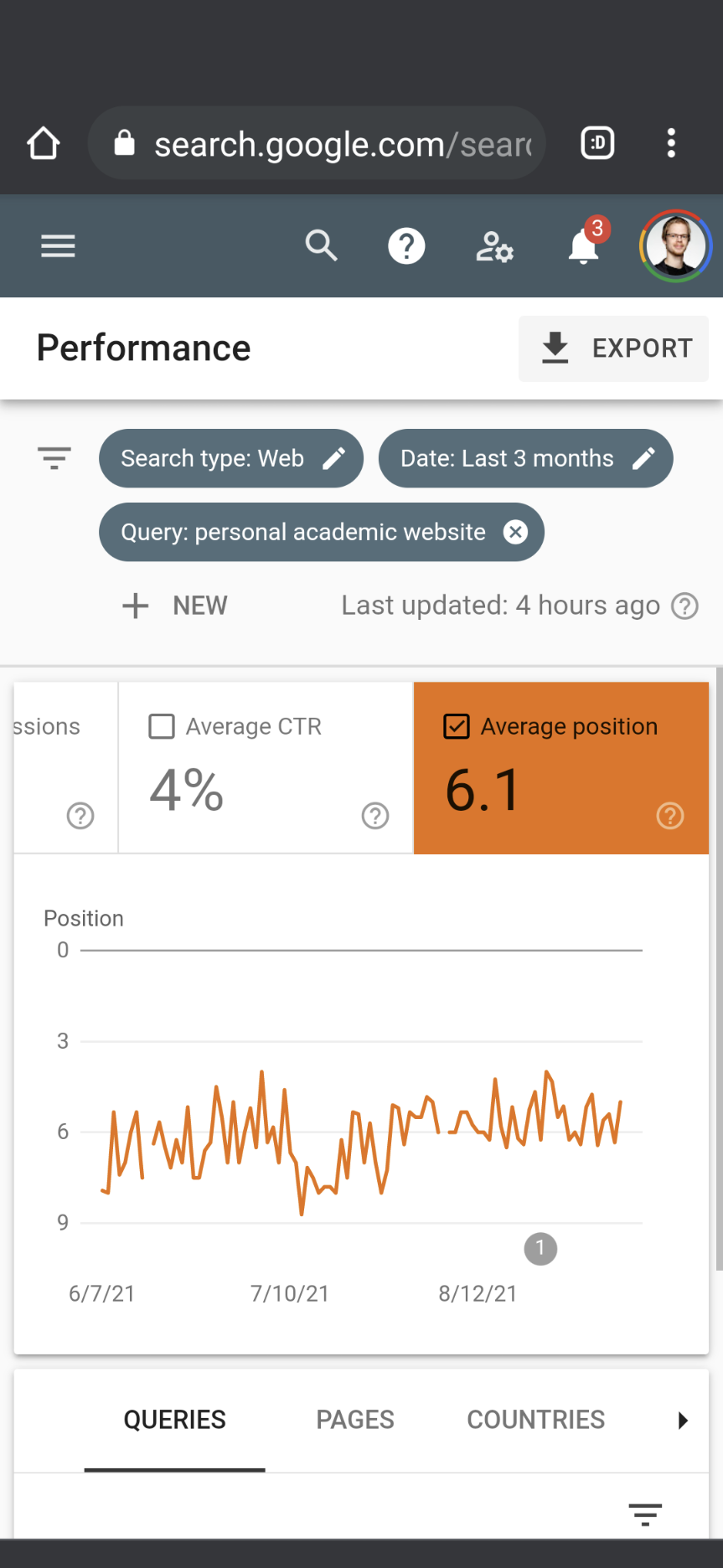
15.02.2021 – Reviews for the first book finished
Every chapter was reviewed by at least three reviewers – two Ph.D. students and an expert on the topic of the chapter. An academic writing coach from ETH read and helped to polish the entire book.
The language edits are also completed. The cover is getting the last touches and as soon as it is ready – the book will be launched.
20.01.2020. Peer Recognized unwittingly turns into a book series
Have you ever unwittingly written five books? I have… 🙂
The current book word count currently shows 97,654 words. Clearly, this is too much for a single book. Originally I planned to have six core chapters in the book: writing papers, illustrating, presenting, online influencing, writing proposals, and job search. As it stands now it would be 365 pages long and have to cost about 48 USD to cover the printing costs alone.
It seems I need a new game plan. And I got one: there will be five books. Each one dedicated to acquiring the skills required at a specific academic career stage of a scientist. For example, a Ph.D. student does not really need to know how to write research proposals so why would I force this information on her. Once the time comes, she can pick up the Peer Recognized series book that is specifically on this topic and learn all about it.
Yes, knowing that I only need to start with one of the planned five chapters would have saved a lot of time and the book would have been out already. But I guess unwittingly writing five books instead of one, is not that bad. Sure, there were many sleepless nights during the previous two years. But hey, it was also a lot of fun and for sure my mind would not have accepted the idea of five books if I would have known this from the onset. Now the five books are far enough so that I can not just stop the project. I will have to finish them all.
Eventually, each of the books will be about 150 pages long, which is a reasonable page count for the busy modern academic.
08.11.2020. Drawing of illustrations for the book
When I don’t know how to express an idea or feel stuck, I try to sketch it. The process forces me to be concrete and give a clear meaning to the concepts that are forming at the back of my head.

In a drawing, it is impossible to hide behind trendy words and empty sentences. There has to be a clear reason for every shape, every arrow, and every word. This often helps me to understand what is it that I want to write.
Often I find that once a sketch is finished, all I have to do it describe it. Writing becomes easy at this point.
I sketch when drafting research concepts, writing papers, and preparing presentation slides. I will also hand-draw all the figures for the upcoming book.
04.29.2020 – http://peerrecognized.com goes public
Finally, Peer Recognized website is ready for launch. I pray the almighty Bots of Google to notice the website.
You would help my prayers by sharing http://peerrecognized.com through your social networks. You see, the almighty Bots take it as a good omen when links to a particular website appear on other websites. By sharing you will help Peer Recognized to get one step closer to the Nirvana of websites – the first page of Google search.
01.12.2020 – Exactly one year has passed since the start
Today exactly one year has passed since I wrote the first line for the book “Peer Recognized”. My original plan was to finish writing by today. Well, unless I can finish three more chapters by the evening, that is not going to happen.
I have reached one goal though. Originally my aim was to finish at about 60,000 words. Today I have 74,000 words and still three chapters that will substantially increase the word count. I never thought I have so much to say…
It has been a very interesting and busy year. I have learned a lot about what it takes to write a book. Surprisingly, I never had to force myself to sit down to write. Rather, I am always a little upset when I have to finish and wait for the next writing slot.
The new target – finish in the next 6 months.
12.26.2019 – Peer Recognized gets a website
After a long research on the best and most affordable hosting services and website builders, I finally bought the domain https://peerrecognized.com/ from Bluehost and will use WordPress for building the site.
The website will serve as a platform for discussing communication in academia with you – someone who recognizes the importance of becoming recognized among peers.
This Peer Recognized website will also be an add-on resource for the book. It will include additional materials that the book will point towards. For example, I will regularly update a list of tools for designing great presentations or point towards the best software to use for developing figures. I did not want to include these resources in the book itself because the list would be outdated soon. Besides, I am sure that you, the reader, also will have suggestions for what tools to include in the list. Through this website, I will be able to keep the information always relevant.
12.25.2019 – The presenting chapter finished
I finish the chapter on presenting and send the draft to my friend for review. He does not have anything to do with academia, but he recently quit a good consulting job to start his own consultancy. As the job requires, he is great at presenting. On top of it, he is a great person and an avid reader so I hope to get honest and useful feedback.
This is the chapter that kickstarted the idea of writing the book, so I am a little nervous. From all the chapters of the book, I am most comfortable with this one, but that’s exactly why the stakes as high.
A couple of weeks later he came back with an encouraging conclusion. He had read it with interest and thought there is not much to add to the content. However, he also mentioned it is difficult to get oriented in the passages of text and advised that I include more graphics.
I thought it is an excellent idea. At first, I thought about hiring a graphic designer but eventually decided that I would make the figures myself. This way I would be able to express them exactly the way I want. Plus it’s a fun evening activity. I bought a Microsoft Surface Pen and found that the Autodesk Sketchbook is perfect for the work.
05.09.2019 – The first reader
I finished the chapter on writing publications and sent it out to my friend, a last year PhD candidate. He is the precise target audience of the chapter – someone who needs to be effective in writing down his research results on a tight schedule.
A week later he had read it and provided some great feedback. Most importantly that the structure of the chapter is a bit too complex to follow. After this, I was not able to get the thought of developing a simple framework for writing publications out of my head. Eventually, I come up with an overarching structure for writing that I call “LEAP”. I am sure it conveys everything a researcher needs to know about writing high-quality research articles in the most efficient way.
04.04.2019 – The inspiration
Today I gave a presentation at the SaferUp! training week on communication in science. SaferUp! is a Horizon 2020 (Europe’s largest research program) project which hosts 15 PhD students across nine countries. During the week all the students met in Bologna for intensive training.
After my presentation five of the 15 students approached me to ask where can they learn more about the topics that I just presented. They had never learned about the ways to effectively communicate their research results. At that moment I had no good advice for a single go-to book they should pick up and study. I did not yet tell them I am writing one, but their interest is a great assurance that there is definitely a need for such a book and I got back home energized to finish it quick.
01.24.2019 – The goal
I check the length of several self-help books and set a target of 50 to 60 thousand words for my book. This feels like a monumental task, because at this point I am at 4,604 words, including seven versions for the title.
I realize I need a good plan for finishing the book so I promise myself to wake up one hour earlier every morning and write before starting my research job. This turns out easier than I expect because it simply means I have to go to bed earlier. It is not a problem, because our baby girl is on a schedule of going to bed at 9 pm. I simply go soon after her. Sure, some nights we do not get to sleep much because she is not a good sleeper, but I keep to my promise and wake up at around 6 am every day, including the weekends.
01.13.2019. 5:21 AM – Peer Recognized in born
I write the first sentence in the coming book. It is “Embrace controversy: the example with models teeth “. It is not a great sentence and there are two grammar errors in it…
I know these details because I choose to write the draft in Google Docs. This will allow me to edit the document and make notes on the go, regardless if I am by my PC, tablet or on the phone. Mobility will be important because I will need to find time during the day that is already not exactly empty. Even more so because our first child was born three months ago.
My plan is to finish the book in one year.
I want to write the best book out there and hope that it will change the way scientists communicate. But even if no one buys it, I am sure the writing experience itself we be worth the effort. I will write a lot and read even more about a topic that I love.
06.15.2018 – The idea
I finish my talk “Engineered Presentation” at the EE Event 2018 in Berlin. It is an asphalt industry meeting where I was invited to talk about promoting our industry.
After the meeting, I get approached by people who thank me for giving great advice although all I did was introduce some basic principles of giving a presentation. Apparently they have never thought about the skill of presenting.
This gets me thinking about the fact that I had to spend years reading books from different fields to learn about presenting, writing research papers, developing graphs, and building a good online image. Why isn’t this all available in a single book that every aspiring researcher could easily read an apply?
Should I write a book?


